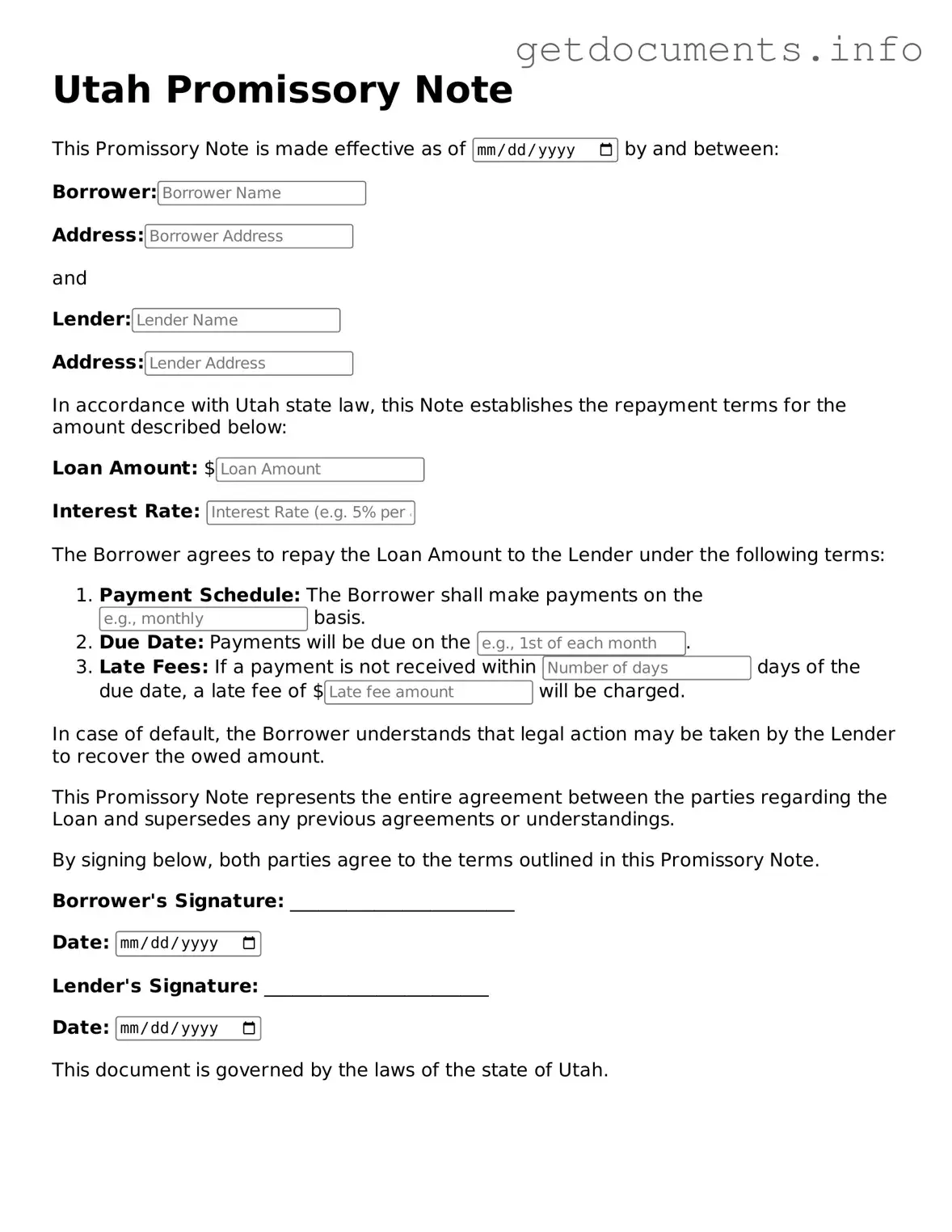Free Promissory Note Template for Utah
A Utah Promissory Note is a legal document that outlines a borrower's promise to repay a specified amount of money to a lender under agreed-upon terms. This form serves as a crucial tool in financial transactions, ensuring clarity and security for both parties involved. If you need to create a promissory note, consider filling out the form by clicking the button below.
Access Promissory Note Editor
